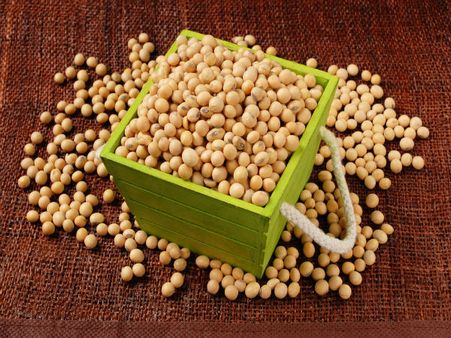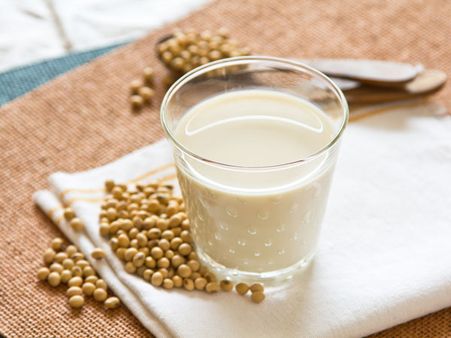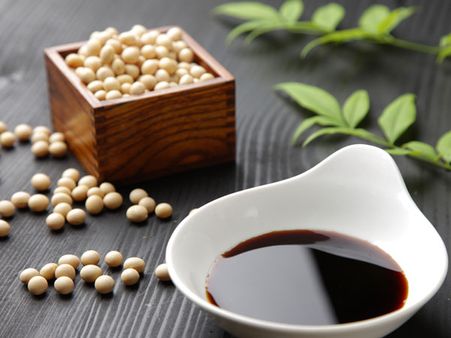Just In
- 1 hr ago

- 2 hrs ago

- 4 hrs ago

- 5 hrs ago

Don't Miss
- News
 Rahul Gandhi To Contest From Amethi? Priyanka Gandhi Vadra's Raebareli Debut?
Rahul Gandhi To Contest From Amethi? Priyanka Gandhi Vadra's Raebareli Debut? - Movies
 Heeramandi: Richa Chadha Over The Moon As Rekha Cried And Hugged Her
Heeramandi: Richa Chadha Over The Moon As Rekha Cried And Hugged Her - Automobiles
 BMW i5 M60 xDrive Launched In India At Rs 1.195 Crore - 592bhp, 516km Range
BMW i5 M60 xDrive Launched In India At Rs 1.195 Crore - 592bhp, 516km Range - Sports
 IPL 2024: How the 10 Most Expensive IPL 2024 Auction Buys have performed this Season? Complete Details and Ratings
IPL 2024: How the 10 Most Expensive IPL 2024 Auction Buys have performed this Season? Complete Details and Ratings - Finance
 Gold Prices Ayodhya: In Ram-Janma-Bhumi, 24carat Falls By Rs 380 In 10-Grams, Drops By Rs 3,800 In 100-gram
Gold Prices Ayodhya: In Ram-Janma-Bhumi, 24carat Falls By Rs 380 In 10-Grams, Drops By Rs 3,800 In 100-gram - Education
 JEE Main Result 2024 Out, Check Category- Wise Toppers' List Here
JEE Main Result 2024 Out, Check Category- Wise Toppers' List Here - Technology
 Qubo InstaView Video Door Phone Launched in India: Check Price, Features
Qubo InstaView Video Door Phone Launched in India: Check Price, Features - Travel
 Escape to Kalimpong, Gangtok, and Darjeeling with IRCTC's Tour Package; Check Itinerary
Escape to Kalimpong, Gangtok, and Darjeeling with IRCTC's Tour Package; Check Itinerary
5 Types Of Soy Allergies In Children
Food allergies are the most common types of allergies found in children. Read on to know about soy allergies in kids.....
Food allergy is a hot topic of discussion, especially when it is all about children. The reason behind this is the uncertainty about the allergy, unless the child is exposed to the allergen.
Food allergies are the most common types of allergies found in children. Among this, soy allergy is a common one. It is mostly seen in babies and young children.
According to studies, soy allergy in children can occur between the ages of 3 and 10. Soy that comes from soybean is included in the legume family. Usually, some people are allergic to one or more types of legumes.
The symptoms of this allergy develop within a few minutes and may last for hours after eating the food that contains soy. Some of the symptoms of soy allergy in children are tingling sensation in the mouth, itching, swelling of the lips or face, wheezing, breathing difficulty, abdominal pain, diarrhoea, vomiting or skin redness.
Most of the parents have a question on how to manage soy allergy in children. There is nothing serious unless soy allergy turns out to be a severe reaction known as anaphylaxis. In this article, we are going to let you know about the 5 types of soy allergies that can be seen in children:

Soy Lecithin Allergy:
Soy lecithin is an additive in most of the food supplies. It is used in many of the food products to improve their shelf-life. This can also help to control crystallization of sugar in chocolates.
Another important feature is that soy lecithin lowers the splattering of oil while frying certain foods. But those who are allergic to soy must be careful and it is better to avoid food products containing soy lecithin.

Soy Protein Allergy:
Soybean and soybean components are popular because it can reduce many dangerous illnesses like heart attacks and cancer.
Even when it plays a great role in nutrition, there are around 21 proteins that may cause asthma-related illnesses. So, when the question on how to manage soy allergy crops up, it is simple to avoid the use of soy.

Soy Milk Allergy:
Some of the babies have soy milk allergy. Recently, it was found that even cow's milk is not good for those who have asthma-related problems.
The best part about soy milk allergy is that it may outgrow when your child reaches the age of 3 years.

Soy Oil Allergy:
Comparatively, soy oil is less allergic, as it carries very less amount of proteins. Consumption of fully refined soybean oil may trigger a severe allergic reaction in very rare individuals.
Soon after the consumption of food that contains soy oil, one may suffer from the reaction. It is better to avoid cooking food in soy oil for children who are allergic to it.

Soy Sauce Allergy:
Yes, as the name suggests, soy sauce is made of mainly soy bean. The main problem with soy sauce is that it contains wheat as well. So, it becomes a difficult task to know the reason for the trigger of the allergy. It will cause inflammation of the mouth and dermatitis.
Remember that the trigger for allergic reactions will be different for each child. Find out the exact cause of allergy in your child and take the right measures to manage it.
-
 fashionHoli 2024 Dress Ideas For Girls & Boys, Style Tips To Let Little Ones Shine Bright
fashionHoli 2024 Dress Ideas For Girls & Boys, Style Tips To Let Little Ones Shine Bright -
 fashionRepublic Day 2024: Kids Will Dress To Impress With These Amazing Fashion Tips
fashionRepublic Day 2024: Kids Will Dress To Impress With These Amazing Fashion Tips -
 pregnancy parentingChristmas 2023: How To Raise Kids Who Are On Santa's Nice And Naughty List This Holiday Season
pregnancy parentingChristmas 2023: How To Raise Kids Who Are On Santa's Nice And Naughty List This Holiday Season -
 pregnancy parentingIncreasing Reports Of STIs In Children: Tips for Parents on Educating Kids about STI Prevention
pregnancy parentingIncreasing Reports Of STIs In Children: Tips for Parents on Educating Kids about STI Prevention -
 pregnancy parentingAre You The Second Favourite Parent To Your Kid? Signs To Watch Out For
pregnancy parentingAre You The Second Favourite Parent To Your Kid? Signs To Watch Out For -
 pregnancy parentingWorld Toilet Day: 5 Ways To Teach Healthy Bathroom Habits In Kids
pregnancy parentingWorld Toilet Day: 5 Ways To Teach Healthy Bathroom Habits In Kids -
 pregnancy parentingChildren's Day 2023: A Glimpse Into Education Abroad: Perspectives From Indian Parents In Canada, Australia..
pregnancy parentingChildren's Day 2023: A Glimpse Into Education Abroad: Perspectives From Indian Parents In Canada, Australia.. -
 pregnancy parentingChildren's Day 2023: Best Gifts Ideas For Children, Kids That Will Help Them Grow Beautifully
pregnancy parentingChildren's Day 2023: Best Gifts Ideas For Children, Kids That Will Help Them Grow Beautifully -
 pregnancy parentingWorld Savings Day: How To Start Saving Habits At A Young Age? 5 Fool-proof Parenting Tips!
pregnancy parentingWorld Savings Day: How To Start Saving Habits At A Young Age? 5 Fool-proof Parenting Tips! -
 pregnancy parentingSpook-tacular Sugar-Free Halloween Snacks: Quick Snacks For Diabetic Kids
pregnancy parentingSpook-tacular Sugar-Free Halloween Snacks: Quick Snacks For Diabetic Kids -
 pregnancy parentingWhat To Do When Your Kid Hates Haircuts? Parenting Tips To Get ‘em To The Salon!
pregnancy parentingWhat To Do When Your Kid Hates Haircuts? Parenting Tips To Get ‘em To The Salon! -
 pregnancy parentingAre Agarbattis Safe For Kids? Watch Out For These Ingredients
pregnancy parentingAre Agarbattis Safe For Kids? Watch Out For These Ingredients


 Click it and Unblock the Notifications
Click it and Unblock the Notifications



